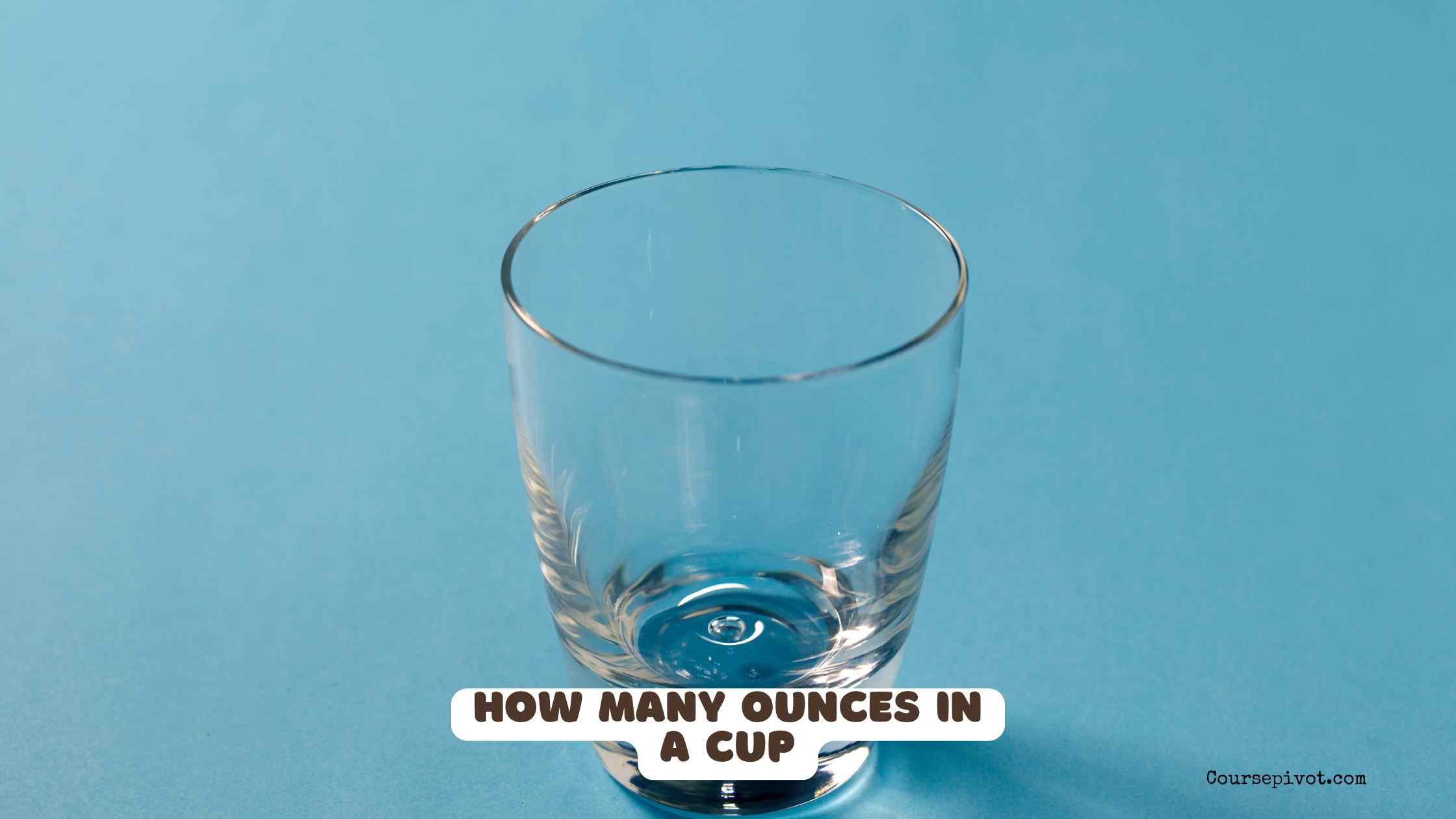
How many ounces in a cup?
Whether you’re whipping up a recipe, measuring out coffee, or tackling a science experiment, knowing how many ounces in a cup is a must to get things right. This simple question can trip you up if you’re not clear on the measurement system, as ounces and cups vary between the U.S. and U.K. systems.
Table of Contents
The blog breaks down the conversion with straightforward answers, practical examples, and tips to make it stick, so you can measure with confidence in any situation.
The Direct Answer: Ounces in a Cup
In the U.S. customary system, used widely in American kitchens, 1 cup equals 8 fluid ounces. This applies to liquid ingredients like water, milk, or juice and is the standard for most U.S. recipes.
In the U.K. imperial system, used in the United Kingdom and some Commonwealth countries, 1 cup equals 10 imperial fluid ounces. The U.K. cup is slightly larger due to differences in how gallons and ounces are defined.
Since most readers are likely in the U.S., we’ll emphasize the U.S. system but include U.K. details for clarity. Note that we’re talking fluid ounces (volume for liquids), not weight ounces, which differ and apply to dry ingredients like flour.
Breaking Down the Conversion
Here’s how the measurement works in each system:
- U.S. Customary System:
1 cup = 8 U.S. fluid ounces. This fits into the broader system where:- 1 gallon = 4 quarts
- 1 quart = 2 pints
- 1 pint = 2 cups
- 1 cup = 8 fluid ounces
So, a U.S. gallon (128 ounces) holds 16 cups (128 ÷ 8 = 16).
- U.K. Imperial System:
1 cup = 10 imperial fluid ounces. The imperial gallon (160 ounces) is larger, so:- 1 imperial gallon = 4 imperial quarts
- 1 imperial quart = 2 imperial pints
- 1 imperial pint = 2 imperial cups
- 1 imperial cup = 10 imperial fluid ounces
This makes a U.K. gallon hold 16 imperial cups (160 ÷ 10 = 16).
For example, if you’re pouring milk for a U.S. recipe calling for 1 cup, you need 8 ounces. In the U.K., that same cup would be 10 ounces, which could throw off your dish if you’re following a British recipe.
Why This Matters
Mixing up U.S. and U.K. measurements can lead to kitchen disasters or project missteps:
- Cooking and Baking: Too much or too little liquid (e.g., 10 ounces instead of 8 in a cake recipe) can ruin texture or flavor.
- International Recipes: A U.K. blogger’s “1 cup” of cream means 10 ounces, not 8, which could make your dessert soupy.
- Science and Nutrition: Precise measurements matter for lab work or tracking liquid intake (e.g., hitting a daily water goal).
For instance, if you’re making coffee and the recipe says “2 cups,” that’s 16 ounces in the U.S. but 20 ounces in the U.K., affecting your brew’s strength.
Practical Applications
This conversion comes up in everyday tasks:
- Recipes: A soup recipe needing 4 cups of broth requires 32 ounces (U.S.)—knowing this helps you scale up for a crowd.
- Drinks: If your reusable cup holds 16 ounces, it’s exactly 2 U.S. cups, perfect for measuring smoothies on the go.
- Shopping: Buying bulk liquids? A 64-ounce jug equals 8 U.S. cups, so you know how many servings you’re getting.
Conversion Quick Reference
Here’s a clear table for both systems:
| System | 1 Cup Equals | Relation to Gallon |
|---|---|---|
| U.S. Customary | 8 fluid ounces | 16 cups = 128 ounces (1 gallon) |
| U.K. Imperial | 10 fluid ounces | 16 cups = 160 ounces (1 gallon) |
To convert between systems:
- U.S. to U.K.: Multiply U.S. ounces by 1.25 (8 × 1.25 = 10).
- U.K. to U.S.: Divide imperial ounces by 1.25 (10 ÷ 1.25 = 8).
Common Questions Answered
- How many 8-ounce cups fit in a gallon? In the U.S., 128 ÷ 8 = 16 cups. In the U.K., 160 ÷ 10 = 16 cups (same number, different volumes).
- Are fluid ounces the same as weight ounces? No—fluid ounces measure volume (liquids); weight ounces measure mass (e.g., sugar). A cup of flour weighs about 4–5 ounces, not 8.
- Why the U.S.-U.K. difference? The U.S. adopted a smaller gallon (based on the British wine gallon) in the 19th century, while the U.K. kept the larger imperial gallon.
Practical Tips for Easy Conversions
Here’s how to master how many ounces in a cup:
- Memorize the basics: “8 for U.S., 10 for U.K.” is your go-to mantra.
- Use measuring tools: Grab a U.S. measuring cup (marked at 8 ounces) for accuracy in American recipes.
- Check recipe origins: If it’s a U.K. blog or cookbook, assume 10 ounces per cup unless specified.
- Leverage apps: Unit converter apps or a quick “ounces to cups” Google search can confirm on the fly.
- Practice visually: Pour 8 ounces of water into a cup to train your eye for U.S. measurements.
These tips make conversions quick and foolproof, whether you’re cooking or calculating.
Things to Avoid
Don’t assume all “cups” are universal—always confirm the measurement system (U.S. or U.K.). Avoid using weight ounces for liquids; a cup of water is 8 fluid ounces but weighs about 8.3 ounces. Don’t skip double-checking international recipes, as misjudging a cup can wreck your dish. Lastly, avoid eyeballing measurements for precision tasks like baking—use a proper measuring cup.
Tailoring to Your Needs
For home cooks, stick with 8 ounces for U.S. recipes, the most common standard. If you’re following U.K. or international recipes, keep 10 ounces in mind or convert using a calculator. Students or scientists should double-check lab protocols for U.S. or metric systems. Hydration trackers? Use 8 ounces per cup to hit your daily water goals (e.g., 8 cups = 64 ounces for a common target).
Key Takeaways
The answer to how many ounces in a cup is 8 fluid ounces in the U.S. customary system and 10 fluid ounces in the U.K. imperial system. This distinction, rooted in historical gallon sizes, is critical for cooking, baking, and precise measurements. By memorizing these numbers, using proper tools, and checking recipe origins, you can avoid mix-ups and measure like a pro. Whether you’re pouring coffee or scaling a recipe, you’ve got the know-how to get it right.
Cite this article
You can copy and paste your preferred citation format below.
Martin, L. & Arquette, E.. (2025, September 30). How many ounces in a cup?. Coursepivot.com. https://coursepivot.com/blog/how-many-ounces-in-a-cup/



